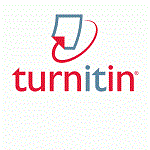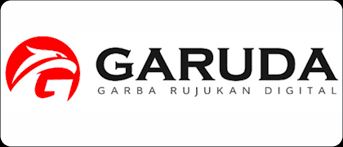PENDAMPINGAN IMPLEMENTASI TEKNOLOGI UNTUK USAHA PENGANGKUTAN LIMBAH BAHAN BERBAHAYA BERACUN PT. BINA ENVIRO NUSA
Abstract
Abstract. The COVID-19 pandemic in 2020 caused an increase in infectious waste from personal protective equipment (PPE) used by the medical team. Infectious waste as hazardous and toxic waste (B3) must be appropriately and correctly handled following applicable laws so that it does not cause soil, water and air pollution. In managing B3 waste, hospitals as waste producers will cooperate with other parties such as B3 waste transport and waste management companies. The increase in the amount of B3 waste that must be transported every two days also increases the volume of work for each party. Monitoring the waste transportation process is critical because several potential problems can occur at this stage. For example, B3 waste disposal is not dumped in proper locations and loss of waste or transportation of waste that does not reach its destination. Various violation cases trigger waste producers to choose established B3 waste carriers rather than the new, small or medium-scale B3 waste carriers. Through this community service activity, Pertamina University collaborates with Small and Medium Enterprises (SMEs) B3 waste carriers in building real-time vehicle location tracking to increase the trust of waste producers toward new SME waste carriers. Thus, it will boost the competitiveness of these SMEs. With this tracking application, waste generators and transporters can check the route taken by transporting vehicles until they arrive at certified waste treatment facilities and monitor vehicle speed so that B3 waste remains safe during the trip.
Abstrak. Pandemik COVID-19 di tahun 2020 menyebabkan peningkatan limbah infeksius dari alat perlindungan diri (APD) yang digunakan tim medis. Limbah infeksius termasuk dalam golongan limbah bahan berbahaya dan beracun (B3) yang proses pengelolaannya harus dilakukan dengan baik dan benar sesuai dengan Undang - Undang yang berlaku, agar tidak menimbulkan pencemaran tanah, air, dan udara. Dalam pengelolaan limbah B3, rumah sakit sebagai penghasil limbah akan bekerjasama dengan pihak-pihak lain seperti perusahaan pengangkut dan/atau pengelola limbah B3. Peningkatan jumlah limbah B3 yang harus diangkut setiap dua hari sekali juga menambah volume pekerjaan setiap pihak. Monitoring pengangkutan limbah B3 merupakan aktivitas yang sangat penting untuk dilakukan, karena adanya potensi masalah yang dapat terjadi misalnya pembuangan limbah B3 tidak di lokasi yang semestinya, hilangnya limbah atau pengangkutan limbah yang tidak sampai ke tujuan. Berbagai temuan dalam pengangkutan limbah mengakibatkan rendahnya kepercayaan penghasil limbah terhadap pengangkut limbah B3 berskala kecil dan menengah, atau yang relatif baru. Melalui kegiatan pengabdian masyarakat ini, Universitas Pertamina bekerjasama dengan pelaku Usaha Kecil dan Menengah (UKM) pengangkutan limbah B3 membangun aplikasi pelacak keberadaan kendaraan pengangkut, untuk meningkatkan kepercayaan penghasil limbah untuk menggunakan jasa pengangkut limbah berskala kecil dan menengah sehingga meningkatkan daya saing UKM tersebut. Dengan adanya aplikasi pelacakan ini, pihak penghasil dan pengangkut limbah dapat memeriksa rute yang dilalui kendaraan pengangkut hingga sampai ke tempat pengolahan yang legal, serta memantau kecepatan kendaraan agar limbah B3 tetap aman selama perjalanan.
Keywords
Full Text:
PDFReferences
Angell, Sonia Y. 2020. “COVID-19 Medical Waste Management - Interim Guidelines.” https://www.cdph.ca.gov/Programs/CID/DCDC/Pages/COVID-19/MedicalWasteManagementInterimGuidelines.aspx (April 9, 2020).
Aqil, A.Muh. Ibnu, and Arya Dipa. 2020. “Government Braces for Increasing Medical Waste during Pandemic - National - The Jakarta Post.” https://www.thejakartapost.com/news/2020/04/01/government-braces-for-increasing-medical-waste-during-pandemic.html (April 9, 2020).
Batam, Media Center kota. 2019. “Perbaiki Tata Kelola Limbah B3, KLHK Sosialisasikan Festronik.” Media Center kota Batam. https://mediacenter.batam.go.id/2019/05/15/perbaiki-tata-kelola-limbah-b3-klhk-sosialisasikan-festronik/ (August 30, 2019).
Edi Triyono. 2021. “Jumlah Limbah Medis Melonjak, Universitas Pertamina Berikan Solusi - Warna News.” https://warnanews.com/jumlah-limbah-medis-melonjak-universitas-pertamina-berikan-solusi/ (December 26, 2021).
European Center for Disease Prevention and Control. 2020. “Guidance for Wearing and Removing Personal Protective Equipment in Healthcare Settings for the Care of Patients with Suspected or Confirmed COVID-19.” https://www.ecdc.europa.eu/sites/default/files/documents/COVID-19-guidance-wearing-and-removing-personal-protective-equipment-healthcare-settings-updated.pdf (April 9, 2020).
“Festronik, Aplikasi Online Pengawasan LB3.” 2017. https://dlh.sumbarprov.go.id/details/news/780 (August 30, 2019).
“Festronik, Hubungkan RS, KLH Serta Perusahaan Pengangkut Dan Pengelola Limbah.” 2018. PERSI. https://persi.or.id/festronik-hubungkan-rs-klh-serta-perusahaan-pengangkut-dan-pengelola-limbah/ (August 30, 2019).
“Festronik - KLHK.” http://festronik.menlhk.go.id/ (August 30, 2019).
Finda Muhtar. 2021. “Limbah Medis Melonjak, Universitas Pertamina Berikan Solusi - BeritaManado.Com: Berita Terkini Manado, Sulawesi Utara.” https://beritamanado.com/limbah-medis-melonjak-universitas-pertamina-berikan-solusi/ (December 26, 2021).
Kasih, Ayunda Pininta. 2021. “Jumlah Limbah Medis Melonjak, Universitas Pertamina Tawarkan Solusi.” Kompas. https://www.kompas.com/edu/read/2021/07/31/103000271/jumlah-limbah-medis-melonjak-universitas-pertamina-tawarkan-solusi?page=all.
Kehutanan, Kementerian Lingkungan Hidup dan. 2020. “Surat Edaran Menteri Lingkungan Hidup Dan Kehutanan Tentang Pengelolaan Limbah Infeksius (Limbah B3) Dan Sampah Rumah Tangga Dari Penanganan Corona Virus Disease (COVID-19).” https://www.persi.or.id/images/2020/data/edaran_klhk.pdf (April 9, 2020).
Kosasih, Danny. 2016. “Pembuangan Limbah B3 Akan Dipantau Dengan Sistem GPS - Greeners.Co.” https://www.greeners.co/berita/pembuangan-limbah-b3-akan-dipantau-dengan-sistem-gps/ (August 30, 2019).
“Limbah B3 GPS Tracking-KLHK.” http://silacak.menlhk.go.id/login/ (August 30, 2019).
Maskur, Fatkhul. 2016. “Pembuangan Limbah B3 Dipantau Dengan GPS - Ekonomi Bisnis.Com.” https://ekonomi.bisnis.com/read/20160225/257/522559/pembuangan-limbah-b3-dipantau-dengan-gps (August 30, 2019).
“Pembuangan Limbah B3 Dipantau Dengan GPS.” http://news.csr.id/2016/02/pembuangan-limbah-b3-dipantau-dengan-gps (August 30, 2019).
Rezi AP. 2021. “Jumlah Limbah Medis Melonjak, Universitas Pertamina Berikan Solusi.” https://www.riaupembaruan.com/kesehatan/jumlah-limbah-medis-melonjak--universitas-pertamina-berikan-solusi/ (December 26, 2021).
Wahyuni, Tri. 2021. “Atasi Limbah Medis, UP Kembangkan Aplikasi Hazwaste | Suara Karya.” https://suarakarya.co.id/atasi-limbah-medis-up-kembangkan-aplikasi-hazwaste/34329/ (December 26, 2021).
Article Metrics
Abstract has been read : 371 timesPDF file viewed/downloaded: 0 times
DOI: http://doi.org/10.25273/jta.v7i2.12495
Refbacks
- There are currently no refbacks.
Copyright (c) 2022 Jurnal Terapan Abdimas

This work is licensed under a Creative Commons Attribution-ShareAlike 4.0 International License.

Jurnal Terapan Abdimas by http://e-journal.unipma.ac.id/index.php/jta is licensed under a Creative Commons Attribution-ShareAlike 4.0 International License.
View Jurnal Terapan Abdimas Stats












